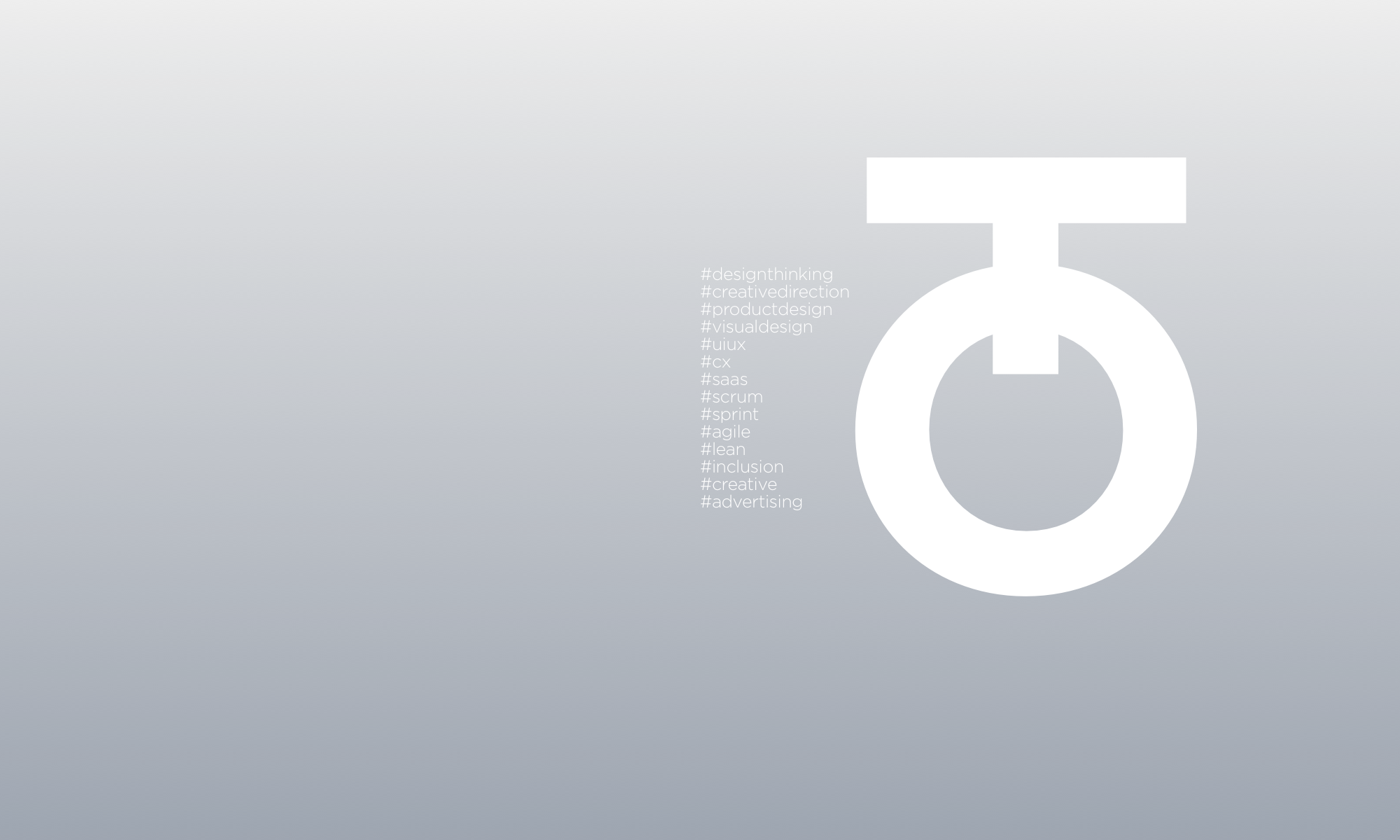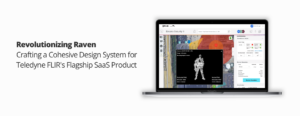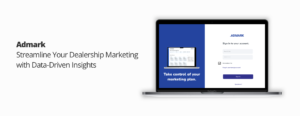As the Accessibility Advocate for my client, Nuance Communications, Inc., an American multinational software technology corporation headquartered in Burlington, Massachusetts, I took on the challenge of enhancing their customer support accessibility.
Nuance Current State
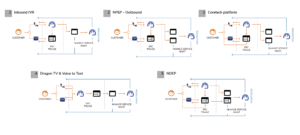
The objective was to create a more accessible and efficient customer support experience by simplifying the entry point for customers to describe their issues, utilizing Jira Service Management, and collaborating with stakeholders and developers to ensure accessibility.
Lead UX Designer
Methods and Tools
Ethnography, Desk Research, MUI, Photoshop, Sketch, InVision, Jira, Confluence, Git
Practices
User Research, UX & UI Design, Prototyping
Technologies
Jira Service Desk, React 18, ASP.NET Core 6, Okta
Through a design thinking process, I was able to leverage best ux practices within an agile framework so that it aligned with the goal to eliminate barriers and provide accessible customer support services for all, regardless of their abilities, to enable a seamless interaction with Nuance’s offerings.
The ux team I was on organized a workshop involving key stakeholders to explore the goals and objectives, as well as to engage in various activities aimed at obtaining deeper insights.
Purpose
Knowledge transfer of current support processes, typical user issues, product suite, and vision for solution.
Objectives
Learn how current products are supported internally.
Define user types with primary and secondary goals of support requests.
Discuss known pain points and issues.
Discuss “typical” user scenarios – number of products per customer, number of support requests, other.
Discuss any previously considered solutions.
Activities
Walkthrough of current process – Nuance SRCs (30 min).
Whiteboard user types + goals – (20 min).
List known issues/pain points – (10 min).
Model flow for the “happy path” through a full service request – from submit to resolution (30 min).
Tools Used
Screenshare and Mural
For a more accessible and efficient customer support experience, we wanted to implement a simplified entry point that allows customers, including those with disabilities, to describe their issues or requests with minimal effort that would significantly improve the quality of information available for ticket routing and resolution.
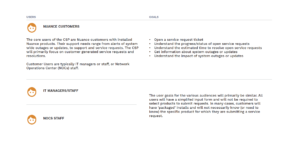
-
- Communication Barriers: Some users with disabilities faced difficulties in communicating their needs due to a lack of accessibility features. Not knowing the duration or progress of a service ticket. Getting updates and status
- Inefficient Routing: Customers expressed their frustrations due to their requests not being routed accurately.
- Frustration and Dissatisfaction: Dealing with accessibility issues that resulted in overall frustration and dissatisfaction with Nuance’s customer support service. Users have had to repeat themselves multiple times or deal with prolonged wait times.
-
- Simplicity Single entry point to raise an issue.
- Accessibility Comply with established accessibility standards.
- Flexibility The ability to escalate an issue.
- Clarity Understand the progress and status of open service requests, understand the estimated time to resolve open service requests, and impact.
The engineering team we were working with leveraged Jira Service Management as the core system for this transformation. Collaborating with developers and stakeholders, me and the team were committed to re-designing the customer experience to ensure accessibility in engaging with Nuance Service Reliability Centers.
The optimal future service model prioritizes a streamlined customer onboarding process, requiring minimal information for issue description or requests to ensure efficient routing. The customer portal would facilitate as two-way communication and serve as the primary platform for customer engagement with Service Resource Centers (SRCs).
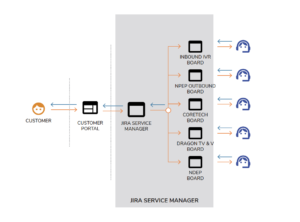
As mentioned earlier, we found out that some users had a tough time getting their point across because the system lacked accessibility features. It was also frustrating for them not to know how long their service ticket would take or where it was at in the process. They really wanted a simple way to report issues, the option to escalate problems, and a way to track what’s happening with their open service requests, including how long it might take to resolve them and what impact it could have.
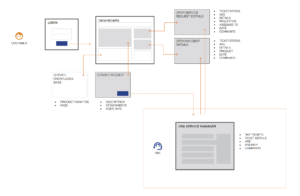
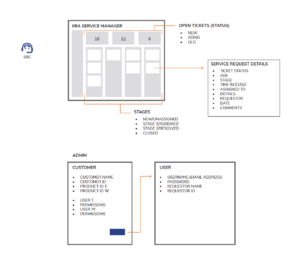
Using insights gathered from User Flows, Information Architecture, and Personas, I developed an initial set of wireframes. These wireframes were then presented to the client, where I conducted a detailed walkthrough of the end-to-end service request process, covering both the Customer and SRC perspectives, from submission to resolution.
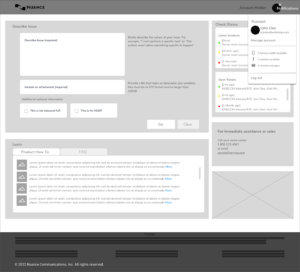
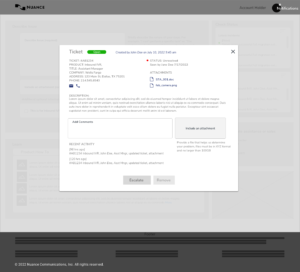
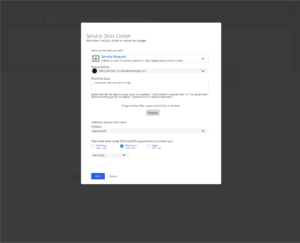
Leveraging the valuable feedback we received from stakeholders regarding our initial wireframes, I proceeded to develop a prototype using Sketch and InVision as my chosen prototyping tools. I also used MUI as my component library and Nuance’s design system for my design. Following a concise presentation, I provided stakeholders with the opportunity to delve deeper into the concepts and information presented. This included sharing a video demonstration to facilitate Nuance’s engagement with the project.
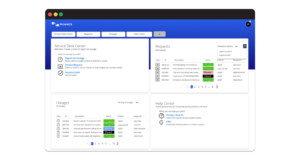
Concluding the video, I structured a set of questions for stakeholders to respond to via email, seeking their valuable opinions and insights.
Here are some examples of the questions I would typically ask after a demo:
-
- Does this address the business objectives we agreed on at the beginning of the project?
- Does this support the needs of the user groups we aimed at?
- Do you believe the users will associate the brand keywords we agreed at the beginning of the project?
- Does the design reflect the wireframes you were involved with creating?
- Does the design communicate the value proposition we agreed at the outset of the project?
Based on the outcomes of our spikes and workshops, our engineering strategy involved building a Web API using .NET 6 to act as an intermediary for the Jira Service Desk platform’s services.
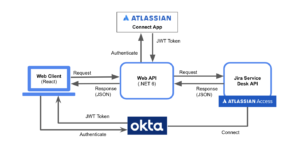
The frontend will communicate with the proxy API and will utilize Okta for user authentication.
Our original release plan encompassed Product Requirements, a Release Strategy, and Investment for the Minimum Viable Product (MVP). Unexpectedly, the client faced some unforeseen challenges that required reevaluation of the MVP approach. In response, we collaborated to streamline certain “Nice-To-Have” features while preserving the overall user experience and fulfilling user expectations. Our primary objective remained aligned with meeting both user requirements and the business objectives of stakeholders.
MVP 2.0
Subsequent releases will gradually incorporate some of the functionalities initially planned for 2.1, as continuous learning and improvement process unfolds, ensuring a more refined product over time.
The achieved outcomes included accessible service requests, an improved customer experience, streamlined workflows, and increased retention and trust.
-
- Accessible Service Requests: We provide a convenient and straightforward method for all customers, including those with disabilities, to log service requests.
- Enhanced Customer Experience: Improving the customer experience is at the forefront of our efforts, ensuring that everyone can access support services effectively.
- Efficiency Across Business Lines: Our accessibility-focused approach streamlines workflows across various business divisions, benefiting both customers and Nuance.
- Increased Retention and Trust: By offering an accessible platform that customers trust and recommend to others, we aim to boost retention rates and build lasting relationships.
My goal was to make customer support services accessible to all, removing barriers and ensuring that everyone, regardless of their abilities, can interact with Nuance’s offerings seamlessly.
